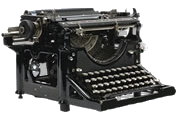The U.S. Sixth Engineers and the 1918 March Offensive (The Stars and Stripes,1919)
When the Doughboys began arriving in France the infantry and artillery were kept in the rear areas and taught the necessities of World War One trench warfare. This was not the case with engineering units of the A.E.F. who were dubbed noncombatants and dispatched hither and yon to attend to those duties deemed appropriate for men with such training. The U.S. Sixth Regiment of Engineers were rebuilding roads on the Somme when the German army came across no-man’s land on March 21, 1918 (a.k.a. Kaiserschlacht: the Kaiser’s battle) and they were quickly ordered to go in support of a nearby British regiment. These engineers were the first Americans to come under German fire and their story is told here by Private E.P. Broadstreet, who was there.
The experiences of the 108th Engineers (Thirty-Third Division) during the Argonne campaign is also told in this article.
Another first-hand account of that day can be read in an interview that appears in this book: Make the Kaiser Dance.
The U.S. Sixth Engineers and the 1918 March Offensive (The Stars and Stripes,1919) Read More »
